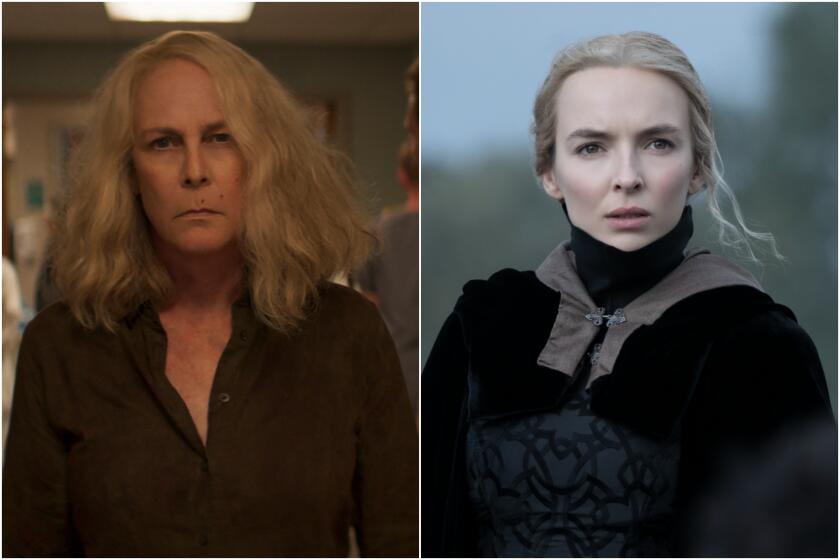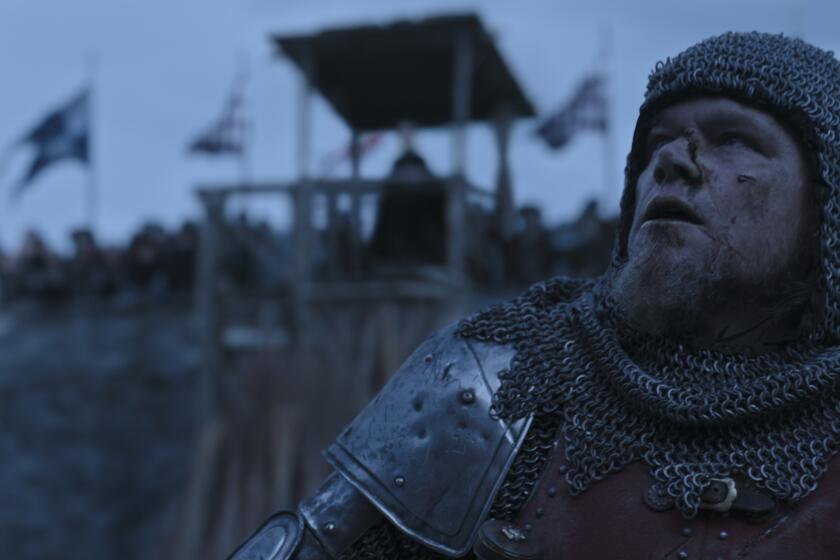Yes, ‘The Last Duel’ is a true story. Here’s what’s historical fact and fiction
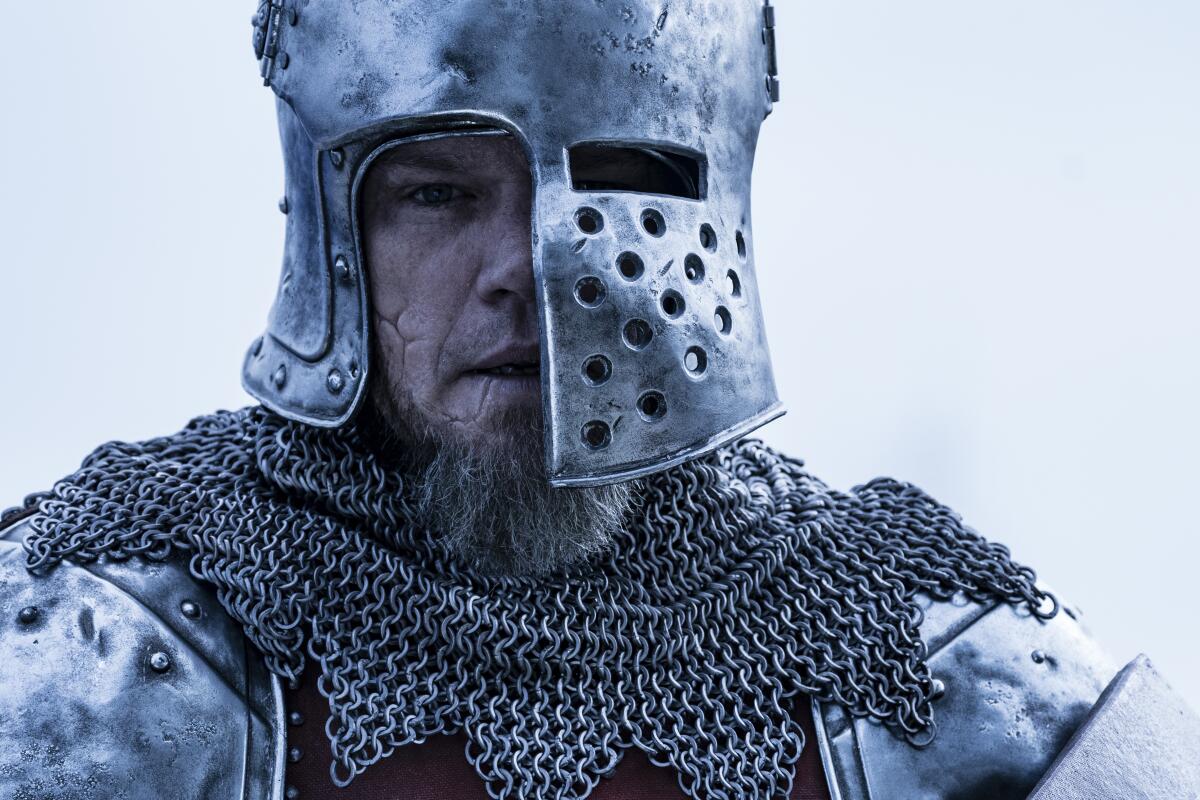
- Share via
LONDON — Spoiler alert: The following story includes details from the historical account behind the new film “The Last Duel” and narrative twists specific to the film. If you’d rather experience the film first, please save this to read after watching.
Eric Jager’s 2004 book, “The Last Duel: A True Story of Trial by Combat in Medieval France,” is a case of truth being stranger than fiction. The nonfiction work catalogs the events leading up to France’s last government-sanctioned trial by combat, held between Jean de Carrouges and his former friend, Jacques Le Gris. The book, exhaustively compiled from existing documents and records, recounts how Carrouges’ wife, Marguerite, accused Le Gris of rape, leading to the pair fighting to the death with Marguerite’s own life on the line if it was decided she had lied.
These events have gotten a cinematic depiction in Ridley’s Scott’s new medieval epic, “The Last Duel,” written by Ben Affleck, Matt Damon and Nicole Holofcener and now playing in theaters nationwide. The film is told in three chapters, from the perspectives of Carrouges (Damon), Le Gris (Adam Driver) and Marguerite (Jodie Comer). While it adheres closely to Jager’s book, with the script using actual lines and passages from his writing, the filmmakers did make some alterations in order to better shine a light on the concepts of consent and perspective.
“Schools educate you, and religious services deliver sermons, and movies — at their best — can generate empathy and generate compassion,” says Affleck. “There is this paradox of the human experience where oftentimes different people come away from the same situation with different impressions of that. And yet there can only be one truth. We wanted to examine that. But we wanted to do it through the lens of this situation.
“So it wasn’t so much about hewing fastidiously to historical truth, because that wouldn’t have served the narrative needs we were as interested in, as much as illuminating the fact that the vestiges of the sexism and misogyny of the patriarchy we live with now come from a place that was Western civilization’s codified value system.”
‘Halloween Kills,’ the latest entry in the blockbuster horror franchise, and period drama ‘The Last Duel’ face different fates in theaters this weekend.
Still, “The Last Duel” does stick closely to historical fact. Jager counts the film as “at least 75 percent historically accurate, maybe more,” noting that while evidence may not exist for specific moments, there is a general record that supports the re-creation. Even the characters’ haircuts — which have been the butt of some online jokes —match up with what we know about the period, according to Jager.
“We don’t have transcripts or historical records that say that on a given day [Marguerite] was doing this or something of that nature, but that’s completely consistent with what such women did,” the author confirms. “Women of that status, on these feudal estates, were in charge of a lot of things, especially when their husbands were away at war or on important business. I would call that historically accurate, even though we don’t have direct testimony that Marguerite did this or that at the time.”
Affleck, Damon, Holofcener, Comer and Jager talked us through what is and isn’t accurate in “The Last Duel” and why the filmmakers made the narrative changes they did.
Giving Women a New Voice
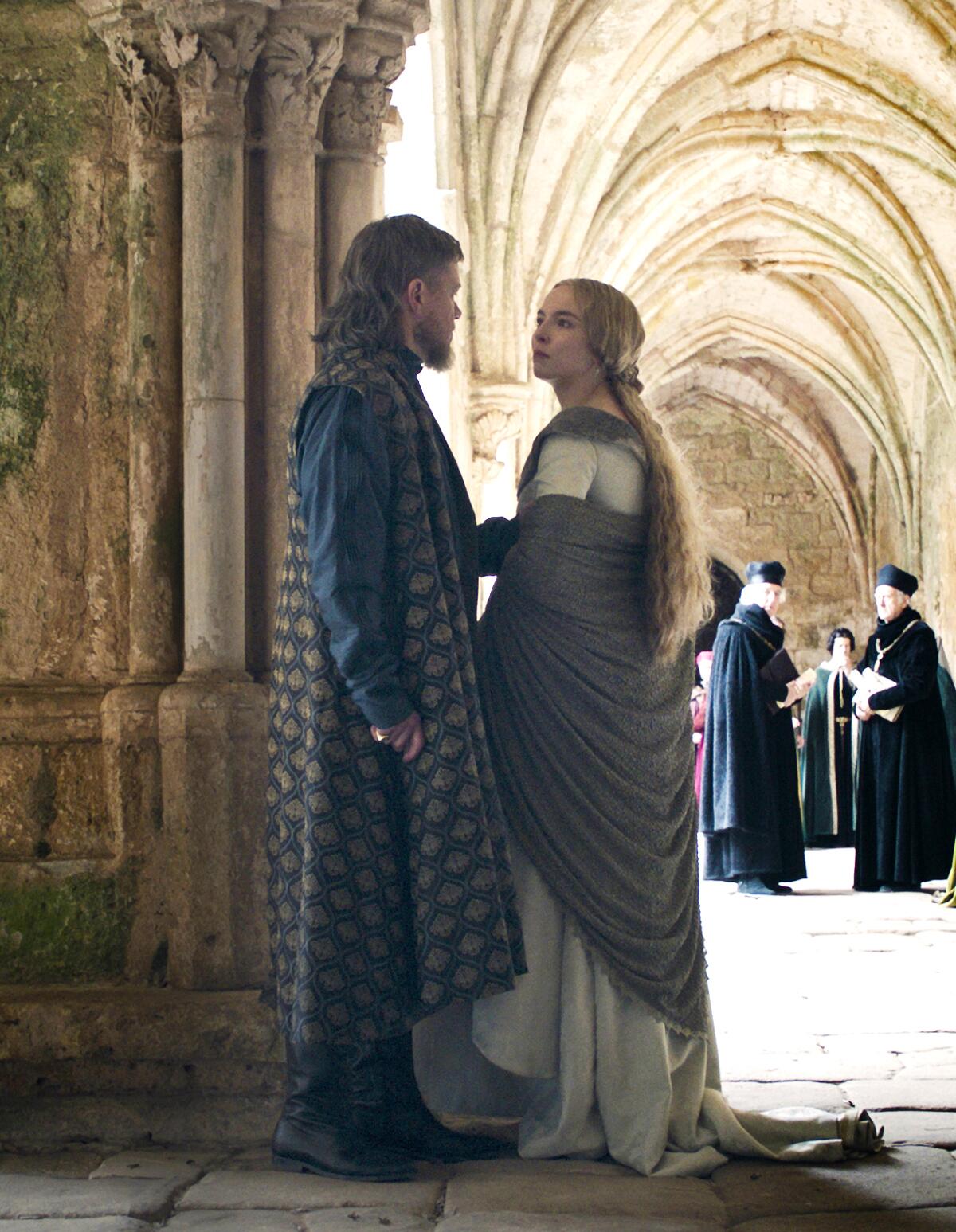
The historical record tends to favor men, so not much is known about the real Marguerite beyond her family’s legacy and her role leading up to the duel. That meant that Holofcener had to create Marguerite’s world and inner life from scratch.
“We gathered from research that she was really capable and educated,” Holofcener says. “But other than that, I made up a lot. I gave her a friend, who ultimately betrays her. I gave her the opportunity to go get a low-cut dress in the style of the queen, which she was later shamed for wearing. But that was from research as well. We read that the queen had pierced nipples and that the dress was almost low enough that you could maybe see them.”
Comer adds, “There was one painting of her that, over time, was completely worn out, just because of time and everything else. It was just the bare minimum description of who she was. That was really sad. But what’s so amazing about Nicole and what Nicole has brought to the piece is this sense of imagination. Really embracing the kind of freedom that gave her. We knew who this woman was generally by the way she spoke out in the time in which she was living in.”
Matt Damon, Adam Driver and Jodie Comer star in Ridley Scott’s return to historical epic form, written by Damon, Ben Affleck and Nicole Holofcener.
Holofcener adhered to historical fact in terms of how Marguerite spoke, what she did and how she behaved, but the rest is a dramatization. Comer brought that sense of history into her performance as well, recognizing what was and wasn’t acceptable for women of the time.
“When you’re doing scenes where you really want to fight back with Carrouges and tell him what it is you really think, you have to go, ‘Hang on a minute, would she do this?’” Comer recalls. “Her husband is abusive — what would be the consequences of this? When would she choose to speak out in this way? It was really trying to understand those types of dynamics and her place within the home and in society.”
Dramatizing the Pivotal Crime
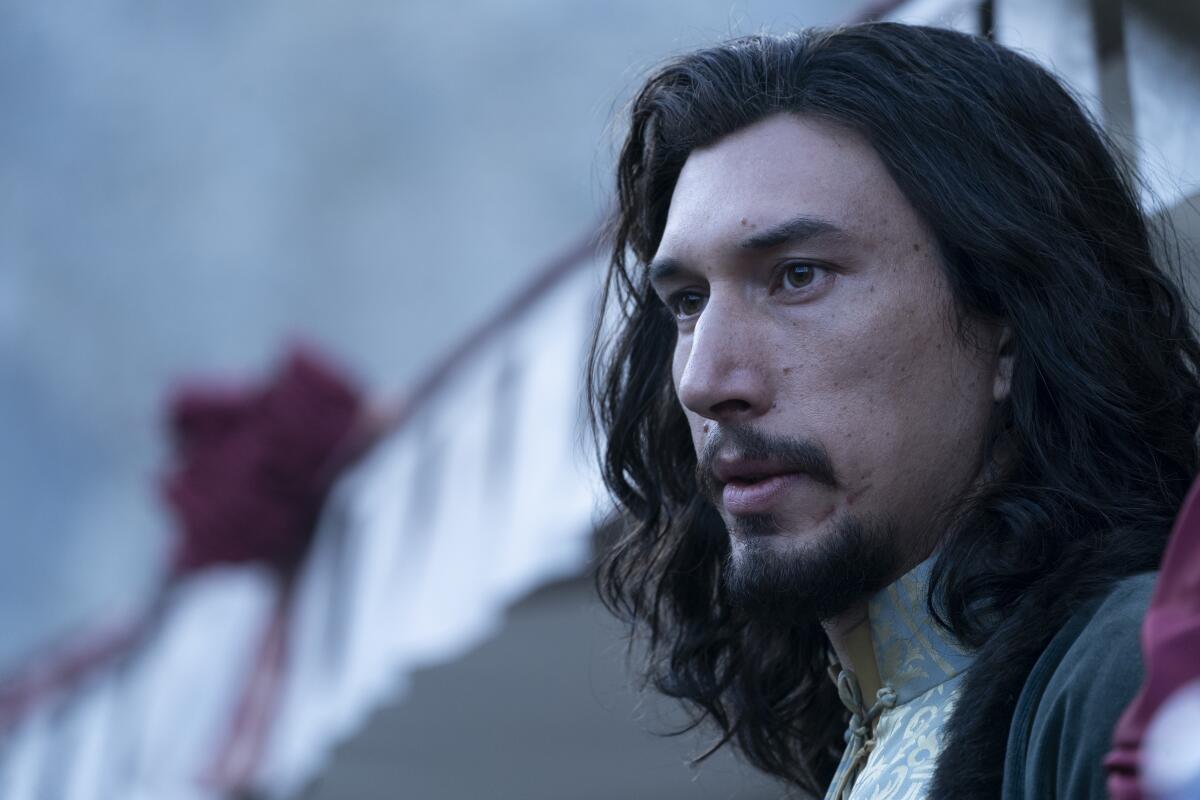
The greatest departure from Jager’s book comes during the rape itself. According to court documents and testimony, Le Gris’ accomplice, Adam Louvel (Adam Nagaitis), participated in the rape. The pair of men tied Marguerite down and physically beat her. While the film’s version, which only involves Le Gris, is brutal to watch, the reality was far rougher, leaving Marguerite with tangible marks of the crime. The screenwriters changed the scene to allow for more nuance.
“Ultimately, that [would have been] a movie about a courtroom evidence drama,” Affleck explains. “Like, ‘I couldn’t have gotten there. I would have had to have taken this many horses, and I didn’t have time to get back.’ It would have become about whether or not it could have been him, or it must have been somebody else. It was the equivalent of a kind of forensics case.”
Damon adds, “It was the case about one very evil man doing something everybody recognized was evil. Rather than this idea of somebody, through the lens of their own experience and acculturation, not understanding their behavior. Not understanding the effect they were having on someone else. Which, to us, was more interesting and, to us, ultimately made it more about an examination of an entire system that was assaulting this woman from the moment she was born.”
From a practical perspective, pulling back on the brutality of the moment was also essential for simply getting the audience to sit through the scene. By taking away the witness and some challenging details, like Le Gris stuffing his hat into Marguerite’s mouth, the filmmakers were able to more fully explore the notion that Le Gris believed his actions were just.
“In the book, Le Gris does say he was in love with her,” Holofcener says. “That’s the research we did and the legend of the story — he thought he was in love with her and did not rape her. And yet he raped her so brutally in history, in the truth, so badly there would be no doubt. He had a witness. She probably had strangle marks. I came in after Matt and Ben decided to do it this way, but they wanted to make it a little more gray. So in his deluded sense of pride, Le Gris could believe it was consensual. And clearly it wasn’t.”
Reconstructing the Historic Duel
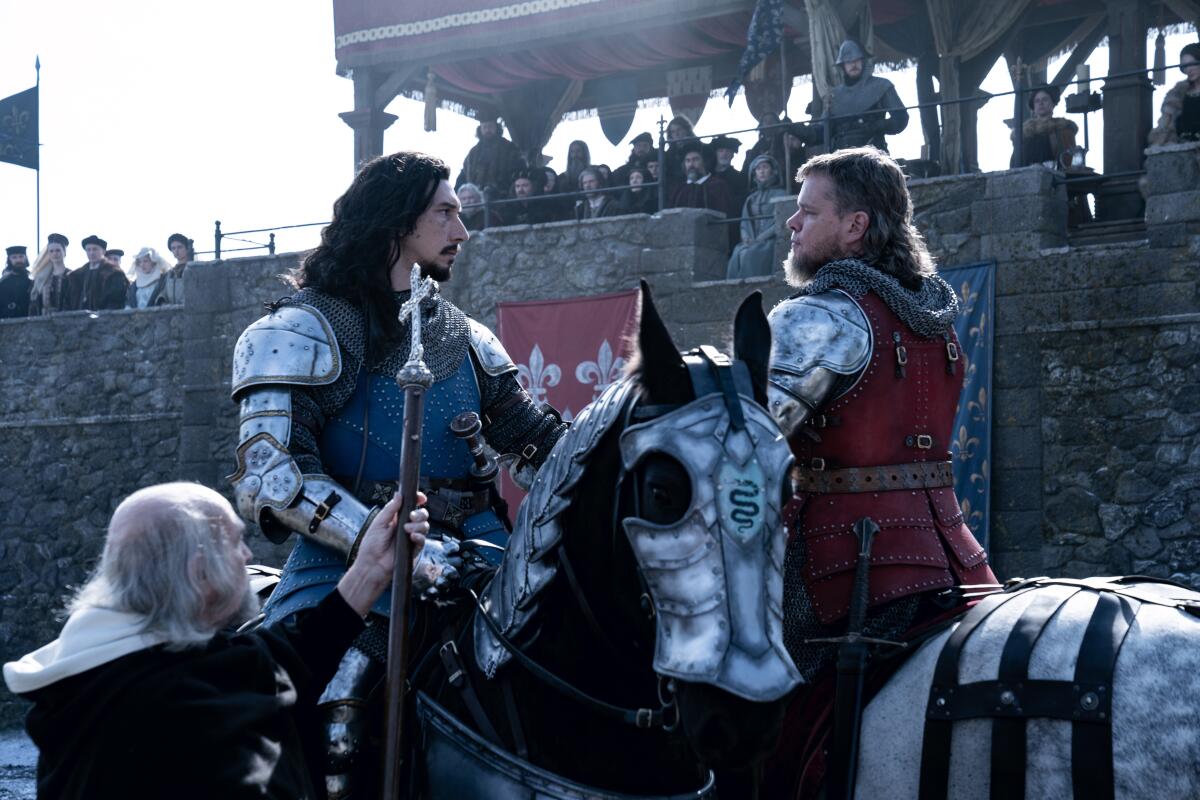
In Jager’s book, the detailed description of the duel between Le Gris and Carrouges, held on Dec. 29, 1386, was drawn from several sources. The film’s version of the brutal fight is a more cinematic variation on what Jager reconstructed in his book, but it’s reasonably close to what may have transpired.
“There were three chroniclers who gave detailed accounts of the sword phase of the fight, and they have slightly different accounts of how Carrouges managed to get Le Gris on the ground,” Jager says. “Did Le Gris stumble? Or did he trip? Or did Carrouges — according to one account — grab him by the helmet and throw him down? ... One of the chroniclers talks about an opening joust, but I had to elaborate a little bit on how a joust like that would unfold with lances broken. Eventually, you have the two men on the ground, fighting with hand weapons rather than lances.”
In reality, the duel would have been decided by two main factors: the weight of the fighters’ armor and how quickly these relatively old men grew tired. Ultimately, Carrouges’ victory was a result of Le Gris being literally unable to get up. Scott and the film’s stunt coordinator used the outline of the actual combat to create something slightly more exciting for the screen.
“[Jager] does a pretty meticulous description of it, but it’s a decidedly uncinematic duel,” Damon notes. “Just in what they were wearing. We would have looked like two tin cans. Which we talked about, but it just became so absurd.”
Affleck adds, “It hinged on the weight on the armor and the fact that once you fell, you couldn’t get up and you were like a trapped lobster. We gave Ridley, ‘This is what took place.’ Because it was such a famous event, there was a record. We gave this great filmmaker the opportunity to dramatize the essence of it and make it compelling to an audience, rather than do literally what happened.”
Driver’s final line, where, as Le Gris, he declares his innocence, is in the historic record. Damon and Affleck took the dialogue directly from Jager’s book. It’s a moment that underscores the timely nature of the film’s message: that we cannot be blind to the perspectives of others.
“Does he truly believe his innocence at the end?” Affleck reflects of Le Gris. “They took the idea of damnation seriously. They were very religious. That was at the root of everything. And that’s one of the things we didn’t focus as much on: They truly believed God would make happen whatever was the fair thing to happen, so it would be God’s will. And for him to have to invoke that at the moment of his death and to protest his innocence [is interesting]. This man who has done something horrible and doesn’t understand it. He doesn’t even recognize it. That resonates. Are we seeing how others experience things?”
Asserting the Truth
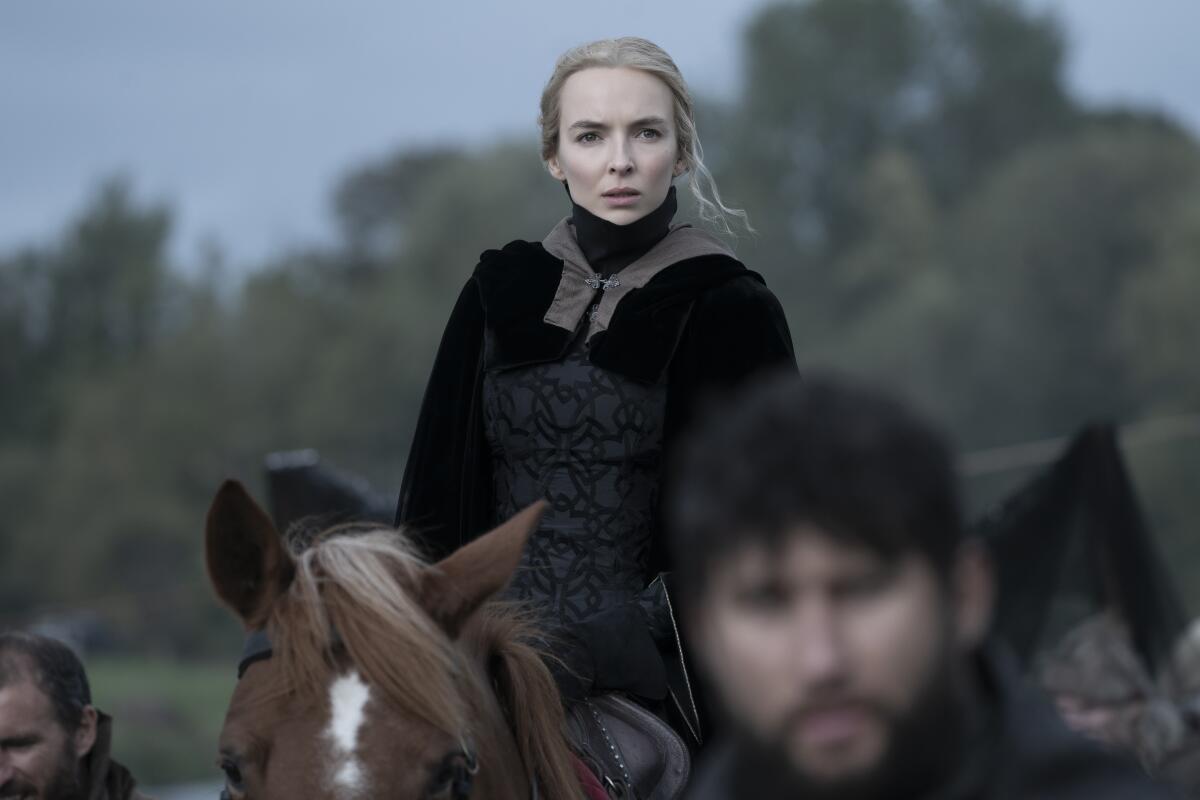
The final chapter of the film, told from Marguerite’s perspective, refers to itself as “the truth.” But while that section of the story by necessity contains the most dramatization, Jager says he does support the filmmakers’ conclusion.
“From an absolute philosophical point of view, nobody but Jacques Le Gris and Marguerite and those who were in the room know the truth,” Jager says. “But the overwhelming likelihood is that she was telling the truth. Her story is detailed and persuasive, and she ran such a great risk to speak up at a time when women were supposed to keep silent about such things. I think the film makes the right choice [in portraying her story].”
Comer agrees. “For me, why would a woman speak out and say this when her life was at risk?” the actress says. “What does she have to gain from that? She has nothing to gain. She has everything to lose. So there was just no doubt for me that this woman was telling the truth. I know that was the same for everyone who was coming toward this project.”
For Affleck and Damon, “The Last Duel” was an opportunity to not only depict a compelling historical event but to reflect on how traces of that system of patriarchy linger today. By unequivocally believing Marguerite, the screenwriters offer that same sense of empathy to all women who follow her.
“It is incumbent on us to be good people, to overcome that and to see more broadly and with empathy,” Affleck says. “With the understanding that your truth may not be somebody else’s truth. There’s a certain arrogance rooted in that assumption. And that’s ultimately why this version of the movie is more interesting to us than a movie where you prove ‘Well, based on the evidence, he did it,’ and either you’re a monstrous villain or you’re wrongfully accused.”
More to Read
Only good movies
Get the Indie Focus newsletter, Mark Olsen's weekly guide to the world of cinema.
You may occasionally receive promotional content from the Los Angeles Times.
